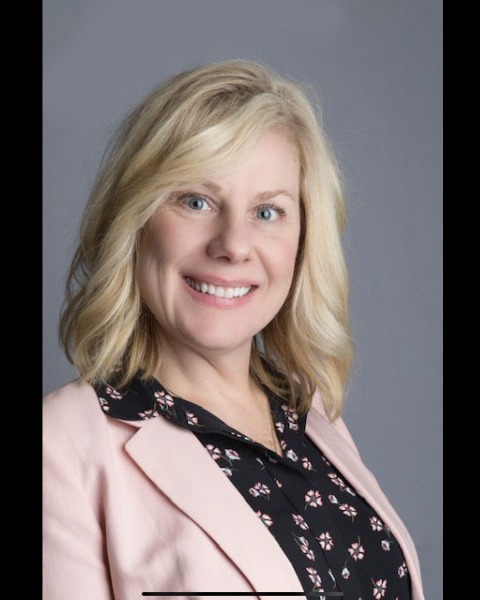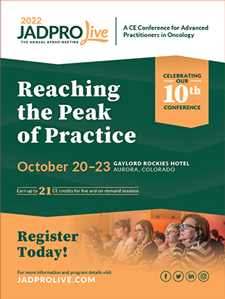Back


Clinical Posters
JL1022C: Lesbian-, Gay-, Bisexual-, Transgender-, Questioning- or Queer-, Intersex-, and Asexual-Inclusive Health Care Versus Traditional: Comparing Patient Satisfaction
Saturday, October 22, 2022
10:00 AM – 11:00 AM ET

Has Audio

Gayle A. Kempinski, DNP, MSN, APNP, ANP-BC, OCN® (she/her/hers)
Director, Oncology Nurse Educators
Edinboro and Clarion Universities
Cedarburg, Wisconsin, United States
Poster Presenter(s)
STUDY AIM
The aim of this study was to evaluate the difference in patient satisfaction scores between lesbian, gay, bisexual, transgender, questioning or queer, intersex, and asexual (LGBTQIA+) individuals who receive healthcare from LGBTQIA+ inclusion clinics and LGBTQIA+ individuals who receive healthcare from traditional clinics.
BACKGROUND
LGBTQIA+ individuals encounter considerable social and structural inequalities, such as discrimination, exclusion, oppression, and stigmatization. These pervasive inequalities persist as major barriers to high-quality healthcare and place LGBTQIA+ individuals at significant risk for health-related disparities and inequities, poor health outcomes, and overall poor health status due to their sexual orientation and gender identity. Mitigating these health-related disparities and inequities necessitates healthcare settings that are inclusive, safe, and affirming, and nursing professionals that are LGBTQIA+ culturally competent and sensitive. Creating an inclusive and affirming environment in which LGBTQIA+ individuals can establish trust and open and honest communication with their healthcare providers can improve provision of care, patient satisfaction, and their health and well-being.
THEORETICAL FRAMEWORK
This study was guided by the Health Equity Framework, centered on three foundational concepts: equity at the core of health outcomes; multiple, interacting spheres of influence; and a historical and life-course perspective.
METHODOLOGY
Study protocol review and approval were obtained from Edinboro University’s Institutional Review Board. This study was an on-line questionnaire study and was conducted using a nonexperimental, nonrandom, cross-sectional study adhering to a quantitative methodology. A nonrandom convenience sample of LGBTQIA+ individuals (n=56) was selected, and study participants were invited to participate in this study via an on-line survey link by way of Qualtrics. Data were collected using the Short-Form Patient Satisfaction Questionnaire (PSQ-18).
RESULTS
To test for differences in patient satisfaction between groups, the independent samples t-test statistical method was utilized. There was not a statistically significant difference in mean values between groups. Due to assumption violations, the Communication sub-scale was tested using the independent samples Mann-Whitney U test to determine if the distributions in the two groups were significantly different from each other. It was found that the distributions in the two groups significantly differed.
CONCLUSIONS
LGBTQIA+ inclusion health plays a critical role in improving patient satisfaction and the health and well-being of LGBTQIA+ individuals.
IMPLICATIONS FOR NURSING PRACTICE
Nursing professionals play an integral role in transforming healthcare for LGBTQIA+ individuals and must align their practices with their professional duty of delivering equitable and culturally competent and sensitive care to LGBTQIA+ individuals.
RECOMMENDATIONS
Further research is needed with larger sample sizes to investigate the relationship between receiving healthcare from LGBTQIA+ inclusion clinics and improved patient satisfaction and whether there is a difference in patient satisfaction between those who receive healthcare from LGBTQIA+ inclusion clinics and those who do not. Because study respondents who went to LGBTQIA+ inclusion clinics had significantly higher communication satisfaction than those who did not go to inclusion clinics, the impact of culturally competent communication on improved patient satisfaction should also be investigated further in future research.
The aim of this study was to evaluate the difference in patient satisfaction scores between lesbian, gay, bisexual, transgender, questioning or queer, intersex, and asexual (LGBTQIA+) individuals who receive healthcare from LGBTQIA+ inclusion clinics and LGBTQIA+ individuals who receive healthcare from traditional clinics.
BACKGROUND
LGBTQIA+ individuals encounter considerable social and structural inequalities, such as discrimination, exclusion, oppression, and stigmatization. These pervasive inequalities persist as major barriers to high-quality healthcare and place LGBTQIA+ individuals at significant risk for health-related disparities and inequities, poor health outcomes, and overall poor health status due to their sexual orientation and gender identity. Mitigating these health-related disparities and inequities necessitates healthcare settings that are inclusive, safe, and affirming, and nursing professionals that are LGBTQIA+ culturally competent and sensitive. Creating an inclusive and affirming environment in which LGBTQIA+ individuals can establish trust and open and honest communication with their healthcare providers can improve provision of care, patient satisfaction, and their health and well-being.
THEORETICAL FRAMEWORK
This study was guided by the Health Equity Framework, centered on three foundational concepts: equity at the core of health outcomes; multiple, interacting spheres of influence; and a historical and life-course perspective.
METHODOLOGY
Study protocol review and approval were obtained from Edinboro University’s Institutional Review Board. This study was an on-line questionnaire study and was conducted using a nonexperimental, nonrandom, cross-sectional study adhering to a quantitative methodology. A nonrandom convenience sample of LGBTQIA+ individuals (n=56) was selected, and study participants were invited to participate in this study via an on-line survey link by way of Qualtrics. Data were collected using the Short-Form Patient Satisfaction Questionnaire (PSQ-18).
RESULTS
To test for differences in patient satisfaction between groups, the independent samples t-test statistical method was utilized. There was not a statistically significant difference in mean values between groups. Due to assumption violations, the Communication sub-scale was tested using the independent samples Mann-Whitney U test to determine if the distributions in the two groups were significantly different from each other. It was found that the distributions in the two groups significantly differed.
CONCLUSIONS
LGBTQIA+ inclusion health plays a critical role in improving patient satisfaction and the health and well-being of LGBTQIA+ individuals.
IMPLICATIONS FOR NURSING PRACTICE
Nursing professionals play an integral role in transforming healthcare for LGBTQIA+ individuals and must align their practices with their professional duty of delivering equitable and culturally competent and sensitive care to LGBTQIA+ individuals.
RECOMMENDATIONS
Further research is needed with larger sample sizes to investigate the relationship between receiving healthcare from LGBTQIA+ inclusion clinics and improved patient satisfaction and whether there is a difference in patient satisfaction between those who receive healthcare from LGBTQIA+ inclusion clinics and those who do not. Because study respondents who went to LGBTQIA+ inclusion clinics had significantly higher communication satisfaction than those who did not go to inclusion clinics, the impact of culturally competent communication on improved patient satisfaction should also be investigated further in future research.

